65 F high in the Twin Cities Thursday.
71 F average high for May 23.
89 F high on May 23, 2012.
.80" rain predicted for the metro area by Monday morning (00z NAM model).
Saturday: coolest day of the holiday, temperatures stuck in the 50s.
70F. possible on Memorial Day, 80s return by the middle of next week.
Ill-Timed Warm Front
My barber, Hurricane Heidi Rusch, was brutally
blunt: "my clients are DISGUSTED by spring, Paul. They're so sick of
cool and wet they don't even want to talk about it!" It's been a
tortured spring, and I'm keeping weather-expectations for the first
unofficial holiday of summer low, hoping we might be pleasantly
surprised.
Showers are likely tonight, a damp start
Saturday with leftover clouds and highs stuck in the 50s. Grade: C-.
Sleep in & see a movie. A few T-storms push across southern
Minnesota Sunday - not an all-day rain, but have a Plan B for part of
the day. A C+ day, but a few degrees milder. Memorial Day looks a bit
better as a warm front lifts north; the best chance of T-storms early.
Skies may brighten enough by afternoon for highs topping 70F. A solid B,
and that's grading on a curve.
Sticky, summerlike 80s return from the middle of next week into early June with swarms of T-storms; a few may be severe.
Today's blog has an ominous hurricane prediction
for 2013, along with news of some recent technology failures, including
the GOES-13 weather satellite, which provides critical data for weather
models and hurricane forecasts.
What can possibly go wrong?
"...
This is an uphill battle, but I'm sure that the market will
ultimately find a way to meet consumer demand. Many industries over the
years — from the stagecoach builders and saddle makers to those who
made the eight-track tape and the Sony
Walkman — didn't much like the change forced on them by the tide of
history. Sooner or later, companies standing in the way today will face a
similar choice: Meet consumers' demands or become obsolete." - Senator John McCain, arguing for a Television Consumer Freedom Act, in the Los Angeles Times below. Image credit:
techcrunch.com.
Looks Like A Holiday. I'll be surprised if we get
out of the 50s Saturday, rain early in the day tapering to drizzle and
sprinkles - probably the worst day of the holiday weekend, although
skies may brighten with drier conditions up north. Sunday brings 60s
(and more showers and T-storms) with a shot at 70 Memorial Day. Cue the
applause track. Of course we see 80s by the middle of next week. Lousy
timing.
Atmospheric Tug-of-War. Warm air riding up and over a
stubborn dome of cooler, drier air over the Great Lakes and Upper
Midwest will spark periods of showers and T-storms over the weekend, the
best chance of rain tonight and early Saturday; another round of
showers and T-storms may push in on Sunday. Tomorrow looks like the
foulest day; I don't expect an all-day rain on Sunday or Monday, but
rather hit or miss showers and T-showers. I'm just the messenger.
Trending Warmer, But Still A Very Wet Pattern. GFS
numbers show rain nearly every day during the first week of June; very
warm air just south of Minnesota but a stubborn flow of Canadian air
keeping a nearly stationary frontal boundary very close to Minnesota.
Translation: showers and T-storms will be numerous the next 2 weeks; a
few may be severe.
Moore Tornado Track Superimposed Over MSP Metro. A
track from Edina to Maplewood? That's what residents of Oklahoma's
southern suburbs, centered on Moore, enduring Monday afternoon, with
patches of EF4 to EF5 damage (highlighted in red). Thanks to
WeatherNation TV meteorologist D.J. Kayser for putting this story into
local perspective. This is the kind of worst-case scenario that keeps me
up at night. God-willing this will never happen, but we need to prepare
for the worst, and hope for the best. An EF-4 can't hit the metro? Tell
that to residents of Fridley.
Moore, Oklahoma: Before And After The Tornado. This
ESRI URL shows the implications of an EF-5 tornado, with devasting detail that I haven't seen anywhere else.
Weather Service Systems Crumbling As Severe Weather Escalates.
Failing weather satellites, NWS web sites going down in the south, the
Chicago office of the NWS unable to issue severe storm warnings - what
is going on? Here's an excerpt from The Washington Post's meteorologist
Jason Samenow at
The Capital Weather Gang: "
As
painfully obvious from the recent events in Oklahoma, tornado season
is in full gear. Meanwhile, hurricane season is a week away. Yet
budget woes and multiple system failures at the National Weather
Service in the past week, not to mention staffing shortages, are raising
concerns that its ability to warn the public of hazardous weather
could crack at any time. In the past 5 days alone, a telecommunications
outage near Chicago made it difficult for NWS forecasters to issue
warnings, a major weather satellite failed, the website for the entire
NWS Southern Region went down, and a NWS official in tornado alley
declined to launch a weather balloon citing budget concerns. These
problems are symptomatic of insufficient funding and dated
infrastructure, advocates for more generous NWS budgets say. What
follows is an overview of the problems NWS has encountered, just since
Sunday..."
The timing of these technical malfunctions and NOAA budget challenges and proposed furloughs is unfortunate...
NOAA Predicts Active 2013 Atlantic Hurricane Season.
We're in an ENSO-neutral period right now, no La Nina cooling or El
Nino warming. El Nino also tends to turn on stronger winds in the
tropics, which can deter tropical storm formation. It may be another
very active season - here are a few excerpts from
NOAA: "
For
the six-month hurricane season, which begins June 1, NOAA’s Atlantic
Hurricane Season Outlook says there is a 70 percent likelihood of 13
to 20 named storms (winds of 39 mph or higher), of which 7 to 11 could
become hurricanes (winds of 74 mph or higher), including 3 to 6 major
hurricanes (Category 3, 4 or 5; winds of 111 mph or higher)....
Three climate factors that strongly control Atlantic hurricane
activity are expected to come together to produce an active or
extremely active 2013 hurricane season. These are:
- A continuation of the atmospheric climate pattern, which
includes a strong west African monsoon, that is responsible for the
ongoing era of high activity for Atlantic hurricanes that began in 1995;
- Warmer-than-average water temperatures in the tropical Atlantic Ocean and Caribbean Sea; and
- El Niño is not expected to develop and suppress hurricane formation..."
Moore Tornado Recovery Efforts Signal Long Road Ahead. Here's an excerpt from a story at
Huffington Post: "...
Early
estimates indicate the tornado caused more than $2 billion of damage
in Moore. Whole subdivisions in the fast-growing community of 56,000
people were destroyed. Authorities estimated that as many as 13,000
homes were damaged or destroyed and 33,000 people were affected – an
especially traumatic toll for a city that had already suffered three
other tornados since 1998. Two elementary schools were hit – one was
leveled – by Monday's tornado. Candelaria was one of seven children who
perished at the Plaza Towers Elementary School, a one story building
with barely a wall left standing. Altogether, 10 children were killed
in the storm, including two infants..."
Photo credit above: "
The sun rises in the distance as a
morning thunderstorm moves over homes damaged from a tornado in Moore,
Okla., May 23, 2013. With authorities saying they have likely recovered
all the bodies to be found beneath the rubble left by the Category 5
tornado Monday, the focus turned to the long and expensive path of
recovering from one of the most catastrophic storms in Oklahoma's
history." (Eric Thayer/The New York Times)
What Happens When A Tornado Hits? Here's an excerpt of an interview I gave to Chris Hayes on
MSNBC Monday evening, describing the dynamics of an EF4/EF5 tornado.
A Tornado Isn't An Object, But Rather A Process.
Tuesday night I had a chance ot explain how tornadoes form, the physics
able to translate spin around a horizontal axis into a vertical axis
(with the help of some great special effects). Here's the video clip
from "All In With Chris Hayes" on
MSNBC. My segment is about 8:00 in.
When Tornadoes Are A Way Of Life. Here's an excerpt of a radio interview I gave to Jennifer Ludden at
NPR's Talk of the Nation on Tuesday: "...
I
think one of the issues that we have in this country is a certain
degree of tornado fatigue. Seventy percent of all tornado warnings,
Jennifer, are false alarms, you know? Nobody wants to get caught with
their Doppler down. So any time we see rotation in a thunderstorm, the
temptation is to issue the warning. But in the process, we're all kind
of bombarded with warnings. You start to tune out. And on a day like
yesterday, you need to break through the clutter and the apathy and the
cry-wolf syndrome and shape people viscerally and emotionally. And the
words that you chose - I think any sociologist will tell you the words
you choose are critical in conveying that level of risk. At one point,
Mike Morgan actually said: If you don't have an underground shelter,
this tornado is unsurvivable. Get into your vehicle, try to drive away -
which you never, ever hear. And yet, that was the magnitude of the
tornado threat yesterday. The problem is with tornados, we don't know
right away if it's an EF1 or an EF4..."
Tornadoes And Urban Sprawl: How Long Until A Major City Is Hit?
Oklahomans know exactly what to do when a major tornado is approaching,
living at Ground Zero of Tornado Alley. But what happens when a similar
(extreme) tornado hits a major city or densely populated suburb? We're
not even close to being ready for that scale of weather disaster. Here's
a link to a video from
WeatherNation TV: "
Meteorologists
Paul Douglas and Susie Martin look at the severe threat for the coming
days, as well as the statistics and the role urban sprawl has when it
comes to the risk of a strong tornado hitting a major city."
Lessons From Moore Tornado Disaster. In today's edition of
Climate Matters
I take a look at some of the implications of the Moore EF-5 tornado,
including situational awareness, multiple information safety nets, and
why you need to REALLY pay attention the next time a "Tornado Emergency"
is issued for your area.
The Rise Of DIY Tornado Shelters. Do you really need
to spend thousands of dollars to retrofit a closet into a steel and
concrete-reinforced "safe room", able to withstand even an extreme
tornado? There may be some things you can on your own. Here's an excerpt
of a timely story from
AccuWeather.com: "...
Homes
without storm cellars or basements offer little protection from a
tornado. While windowless rooms and closets offer more safety than other
parts of the house, people are still left vulnerable to tragedy when
storms strong enough to level entire structures come through. Storm
shelters are built to withstand winds that standard household rooms are
not equipped to handle. There have been cases of safe rooms remaining
completely intact, protecting the people inside, as the entire building
around it crumbles to the ground in a tornado. As people try to prepare
for the worst, companies that produce do-it-yourself storm and tornado
shelters are reporting a sharp increase in sales..."
Photo credit above: "
Robert Hanna, civil engineer,
and Jeff Ice, quality assurance inspector, both from the U.S. Army
Corps of Engineers, check out a tornado shelter." Photo courtesy of US Army Corps of Engineers
NOAA Satellite Malfunctions; May Affect Forecasts. This is not a good development. Meteorologist Andrew Freedman at
Climate Central has the story; here's an excerpt: "
As
the weather system that spawned the deadly Moore tornado moves
eastward, the main weather satellite used for observing and forecasting
conditions across eastern North America and the Atlantic Ocean has gone
offline. It's the second malfunction since September 2012, when a
technical glitch was fixed by engineers working from the ground.
According to the National Oceanic and Atmospheric Administration
(NOAA), which operates the nation’s fleet of weather satellites, the
satellite, known as GOES-13, initially malfunctioned at 11:40 p.m.
eastern time on Tuesday. An initial recovery procedure was unsuccessful
at restoring it to operation..."
Graphic credit above: "
NOAA rending of a GOES satellite." Credit: NOAA.
GOES-14 Starts Service As GOES-East. NOAA is using a spare satellite to try to make up for the GOES-13 outage; here's an update from
The University of Wisconsin CIMSS Satellite Blog:
"At 1000 UTC (Thursday), GOES-14 imagery started flowing to AWIPS as
the GOES-East satellite. Work continues on evaluating the status of
GOES-13. GOES-14 remains at 105.5 West, and GVAR data are being
broadcast directly from GOES-14. Updates on GOES-13 — and all
satellites — can be found
here."
John McCain: Cable TV, The Right Way. The Television Consumer Freedom Act? Here is a clip of an Op-Ed from Senator John McCain at
The Los Angeles Times that caught my eye: "...
The numbers are striking. According to the Federal Communications Commission,
the price for basic cable has grown by an average of 6.1% a year over
the last 16 years — three times the rate of inflation and far outpacing
the average American's paycheck. Cable bills are projected to continue
rising to an average of $200 a month by 2020. The 82% of American
households that subscribe to cable or satellite television are stuck
paying escalating prices for "bundled" packages of more than 100
channels, despite the fact that the average viewer tunes in to only
about 18 of them. Reinforcing this fundamental unfairness is a federal
regulatory and legal framework that tilts in favor of cable companies
and television programmers at the expense of consumers..." (photo credit: readwrite.com).
From Here You Can See Everything. Enjoy binge TV
viewing? Hooked on Netflix? So am I. Maybe that's not such a good thing,
long term, as argued in this thought-provoking piece at
themorningnews.org; here's an excerpt: "...
I
always binge on media when I’m in America. But this time it feels
different. Media feels encroaching, circling, kind of predatory. It
feels like it’s bingeing back. The basic currency of consumer media
companies—Netflix, Hulu, YouTube, NBC, Fox News, Facebook, Pinterest,
etc.—is hours of attention, our attention. They want our eyeballs
focused on their content as often as possible and for as many hours as
possible, mostly to sell bits of those hours to advertisers or to pitch
our enjoyment to investors. And they’re getting better at it, this
catch-the-eyeball game. Consider Netflix. These days, when one episode
of The West Wing ends, with its irresistible moralistic tingle, I don’t
even have to click a button to watch the next one. The freshly rolling
credits migrate to the top-left corner of the browser tab, and below
to the right a box with a new episode appears, queued up and just
itching to be watched. Fifteen seconds later the new episode starts
playing, before the credits on the current episode even finish. They
rolled out this handy feature—they call it Post-Play—last August. Now
all I have to do is nothing and moralistic tingle keeps coming...." (photo credit:
wired.com).
The Suicide Epidemic. I've lost too many friends and
family members to suicide. As a society we don't stigmatize people with
diabetes, and yet another chemical imbalance, depression, is often
brushed under the carpet. No, we can't possibly admit to that, as if
it's a character flaw or genetic defect. But it's not. Depression is
treatable, with medication and therapy everyone can be helped. We have
to keep pounding home that message, to our friends, colleagues and
family members, and if you suspect someone is in a dark place, don't
ignore it - do something about it. Help them find the help they need.
Read this article at
The Daily Beast and then do something positive, like supporting
SAVE (Suicide
Awareness, Voices of Education), based in Bloomington with an
international outreach. Their director (and a good friend of mine) Dr.
Dan Reidenberg, has testified before Congress. SAVE has an amazing staff
and volunteers working 24/7 to avoid senseless, horrific tragedies.
Consider attending their annual Fashion Show to raise more funds to help
more people in need - next Thursday, May 30, in Minneapolis.
Details are here. I feel strongly about SAVE and it's mission - I hope to see you there.
TODAY: Sunny start, clouds increas this afternoon. Winds: SE 10-15. High: 68
FRIDAY NIGHT: Showers likely, possible thunder. Low: 51
SATURDAY: Coolest day of the holiday. Damp start. Mostly cloudy, cool breeze. SE 15. High: 59
SUNDAY: Peeks of sun, scattered T-showers, milder. Winds: SE 15. Wake-up: 52. High: 66
MEMORIAL DAY: Some sun, stray pop-up T-storm? Much of the day should be dry. Wake-up: 55. High: 72
TUESDAY: Sticky & stormy, some severe. Wake-up: 60. High: near 80
WEDNESDAY: T-storms early, then warm & humid. Wake-up: 63. High: 84
THURSDAY: More T-storms, some strong. Wake-up: 64. High: 82
Climate Stories...
Floating Research Station In Need Of Evacuation. A
friend forwarded me this article late last night - a Russian research
facility near the North Pole being evacuated due to unstable ice. In
May? More evidence of profound changes at the top of the world. Here's
an excerpt from
The Barents Observer: "
The
scientific research station was placed on the ice floe in October 2012
and was planned to stay there until September. Now the floe has
already started to break apart and the crew has to be evacuated as soon
as possible. Russia’s Minister of Nature
Resources and Ecology Sergey Donskoy has ordered that a plan for
evacuation should be ready within three days, the Ministry’s web site reads. “A
collapse of the station’s ice floe poses a threat to its continued
work, the lives of the crew, the environment close to the Canadian
Economic Zone and to equipment and supplies”, a note from the minister
reads..."
Photo credit above: "Some 16 scientists have spent the winter on the floating research station North Pole-40." (Photo: AARI)
The Odds Of Disaster: An Economist's Warning On Global Warming. Here's an excerpt of a Paul Solman interview with economist Martin Weitzman at
The PBS NewsHour: "...
Once
it is in the atmosphere, CO2 remains there for a very long time. Even
if CO2 emissions were cut to zero at some point in the future (a very
drastic assumption), about 70 percent of CO2 concentrations over the
pre-industrial level of 280 ppm would remain in the atmosphere for the
following one hundred years, while about 40 percent would remain in the
atmosphere for the following one thousand years. This, along with the
possibility of bad outcomes, is the argument for keeping CO2
concentrations from reaching very high levels. Most people do not
realize how difficult it is to stabilize CO2 concentrations. It is not
nearly enough to stabilize CO2 emissions, which would cause CO2
concentrations to keep on increasing at the same rate as before. (This
is because changes in concentrations are proportional to emissions.) The
problem is that if you want to stabilize CO2 concentrations, you have
to make drastic cuts in CO2 emissions. This is no easy feat. Yet, unless
it is done, we are liable to reach very high levels of CO2
concentrations. Global warming skeptics would dispute or minimize the
link between CO2 concentrations and temperature increases. Here is yet
another uncertainty -- are they or the mainstream climate scientists
more right than wrong? But can we afford the luxury of assuming that a
small minority of climate skeptics are more correct than the vast
majority of mainstream climate scientists? What is the probability of
that?..."
Photo credit above: "
No one can say with any assurance what the
dollar value of damages would be from the highly uncertain climate
changes that might accompany a planet earth that is steadily warming.: PBS NewsHour.
Has Global Warming Stalled? Noted climate scientist Kevin Trenberth has some answers in a post at
The Royal Meteorological Society; here's an excerpt: "
Has
global warming stalled? This question is increasingly being asked
because of impressions about local weather being cool and wet, or
because of impressions that the global mean temperature is not
increasing at its earlier rate or the long-term rate expected from
climate model projections. The answer depends a lot on what one means by
“global warming”. For some it is equated to the “global mean
temperature”. That quantity keeps going up but also has ups and downs
from year to year. More on that shortly. Why should it go up? Well,
because the planet is warming from human activities. With increasing
carbon dioxide and other heat-trapping greenhouse gases in the
atmosphere, there is an imbalance in energy flows in and out of the
top-of-atmosphere: the greenhouse gases increasingly trap more
radiation and hence create warming. "Warming" really means heating,
and so it can be manifested in many ways. Rising surface temperatures
are just one manifestation. Melting Arctic sea ice is another. So is
melting of glaciers and other land ice that contribute to rising sea
levels. Increasing the water cycle and invigorating storms is yet
another. However, most (over 90%) of the energy imbalance goes into
the ocean, and several analyses have now shown this..."
* Trenberth's article at The Conversation, with additional graphics and imagery, is
here.
Hot In My Backyard. This compilation of radio reports is worth a listen; here's an overview of the series from
This American Life: "
After
years of being stuck, the national conversation on climate change
finally started to shift — just a little — last year, the hottest year
on record in the U.S., with Hurricane Sandy flooding the New York
subway, drought devastating Midwest farms, and California and Colorado
on fire. Lots of people were wondering if global warming had finally
arrived, here at home. This week, stories about this new reality...."
Heat-Related Deaths May Increase With Climate Change. Here's an excerpt of a story from LiveScience and
Fox News: "
Heat-related
deaths in New York City's borough of Manhattan may rise about 20
percent over the next decade, according to a new study. Researchers at
Columbia University in New York analyzed the relationship between daily
temperatures and temperature-related deaths
across all seasons between 1982 and 1999 in Manhattan, which comprises
the most densely populated county in the United States. The findings
were published online May 19 in the journal Nature Climate Change..."
Tornadoes And Climate Change: Huge Stakes, Huge Unknowns.
In light of the Moore, Oklahoma tornado disaster people are asking "is
there a link to a warmer, more energetic atmosphere?" Here's an excerpt
of a timely Jeff Masters post at
Wunderblog: "...
Is
climate change already affecting these storms? These are hugely
important questions, but ones we don't have good answers for. Climate
change is significantly impacting the environment that storms form in,
giving them more moisture and energy to draw upon, and altering
large-scale jet stream patterns. We should expect that this will
potentially cause major changes in tornadoes and severe thunderstorms.
Unfortunately, tornadoes and severe thunderstorms are the extreme
weather phenomena we have the least understanding on with respect to
climate change. We don't have a good enough database to determine how
tornadoes may have changed in recent decades, and our computer models
are currently not able to tell us if tornadoes are more likely to
increase or decrease in a future warmer climate..."
Image credit above: "Remarkable
video of the tornado that hit Tuscaloosa, Alabama on April 27, 2011,
part of the largest and most expensive tornado outbreak in U.S.
history--the $10.2 billion dollar Southeast U.S. Super Outbreak of
April 25 - 28, 2011. With damage estimated at $2.2 billion, the
Tuscaloosa tornado was the 2nd most expensive tornado in world history,
behind the 2011 Joplin, Missouri tornado. Fast forward to minute four
to see the worst of the storm." Source: Weather Underground.
Tornadoes And Global Warming: Is There A Connection? Here's a good summary of the uncertainty involved in connecting the dots with climate change and tornadoes from
National Geographic: "...
Linking
any particular weather event to climate change is always tricky,
because weather is inherently random. But weather patterns can speak to
a warming planet. Scientists can detect that extreme rain events, for
instance, are already happening more often than they used to, and that a
warmer atmosphere with more water vapor in it is making such events
more likely. Tornadoes are different. Global warming may well end up
making them more frequent or intense, as our intuition would tell us.
But it might also actually suppress them—the science just isn't clear
yet. Neither is the historical record..."
Photo credit above: "
Scientists can't say yet whether global warming will increase tornadoes." Photograph by Carsten Peter, National Geographic
Making Sense Of The Moore Tornado In A Climate Context. Climate Central meteorologist Andrew Freedman does a good job connecting the dots; here's an excerpt: "...
Tornado data
does not reveal any clear trends in tornado occurrence or deaths that
would suggest a clear tie to global warming, at least not yet. A recent paper
published in the Bulletin of the American Meteorological Society found
that the occurrence of EF-1 and stronger tornadoes on the Enhanced
Fujita Scale has shown no trend since 1954, which was the first year of
near real-time data collection. Instead, an increase in tornado counts
of EF-0 or stronger tornadoes has been attributed to an uptick in
observations of very weak tornadoes. The Enhanced Fujita Scale measures
tornado strength based on the extent and type of damage that they cause
(no surface weather station has ever survived a direct tornado strike
to take wind measurements from inside a twister)..."
Graphic credit above: "
Probability
of severe thunderstorms within 25 miles of a location as averaged from
1982-2011. This shows the highest odds of severe weather on Monday
were in Oklahoma." Credit: Storm Prediction Center.
CBO: Carbon Tax An Option To Avoid "Catastrophic" Outcomes. Here's an excerpt of a story at
The Hill: "
The
Congressional Budget Office (CBO) noted Wednesday that a carbon tax
could generate “significant” revenues for the United States and avert
“catastrophic” effects of climate change. CBO said in a new report that
there are many uncertainties about how to design and implement a carbon
tax, but waiting too long to curb greenhouse gas emissions would have
clear results. “[D]elays would increase the expected damage from climate
change by increasing the risk of very costly, potentially even
catastrophic, outcomes. … In general, the risk of costly damage is
higher as the extent of warming increases and as the pace of warming
picks up; thus, failing to limit emissions soon increases that risk,”
the report said...."
Seeking Clarity On Terrible Tornadoes In A Changing Climate. Here's an excerpt of an Andy Revkin article at
The New York Times: "
The
vulnerability is almost entirely the result of fast-paced, cost-cutting
development patterns in tornado hot zones, and even if there were a
greenhouse-tornado connection, actions that constrain greenhouse-gas
emissions, while wise in the long run would not have a substantial
influence on climate patterns because of intertia in the climate system.
Some climate scientists see compelling arguments for accumulating heat
and added water vapor fueling the kinds of turbulent storms that spawn
tornadoes. But a half century of observations in the United States show
no change in tornado frequency and a declining frequency of strong
tornadoes..."
Photo credit above: "
Billy McElrath, left, sits on a 1968
convertible Corvette buried under rubble in what was the garage of his
home in Oklahoma City on Tuesday, May 21, 2012. The residents of Moore,
Okla., affected by a deadly tornado, are coming back to find their
belongings scattered and their homes left in pieces." (AP Photo/Sean Murphy)
Why Rational People Buy Into Conspiracy Theories. I thought this was interesting - here's a clip from a
New York Times story: "...
While
psychologists can’t know exactly what goes on inside our heads, they
have, through surveys and laboratory studies, come up with a set of
traits that correlate well with conspiracy belief. In 2010, Swami and a
co-author summarized this research in The Psychologist, a scientific
journal. They found, perhaps surprisingly, that believers are more
likely to be cynical about the world in general and politics in
particular. Conspiracy theories also seem to be more compelling to
those with low self-worth, especially with regard to their sense of
agency in the world at large. Conspiracy theories appear to be a way of
reacting to uncertainty and powerlessness..."


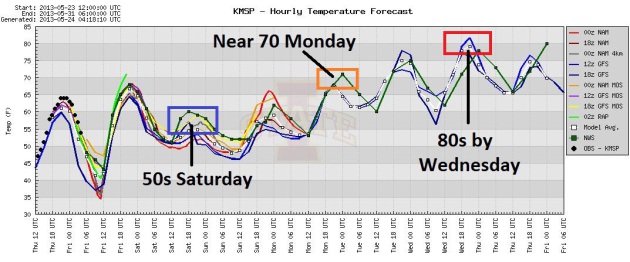
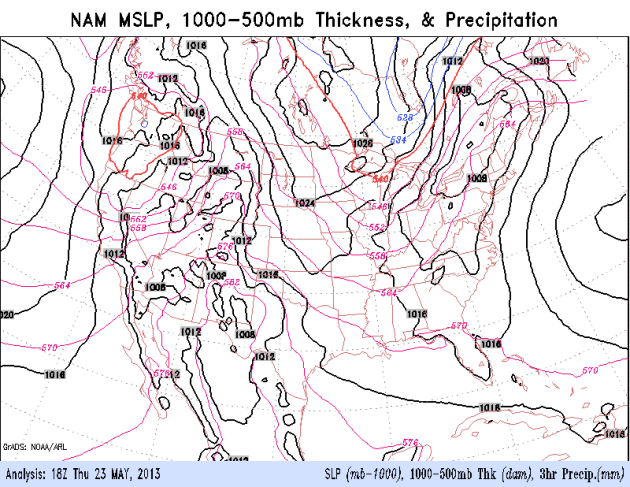

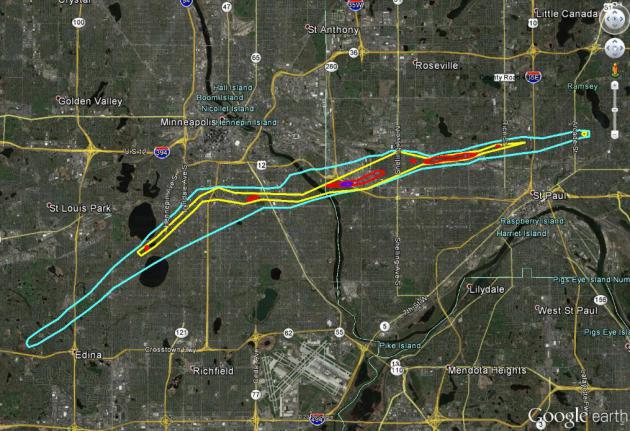


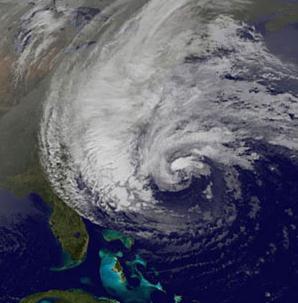


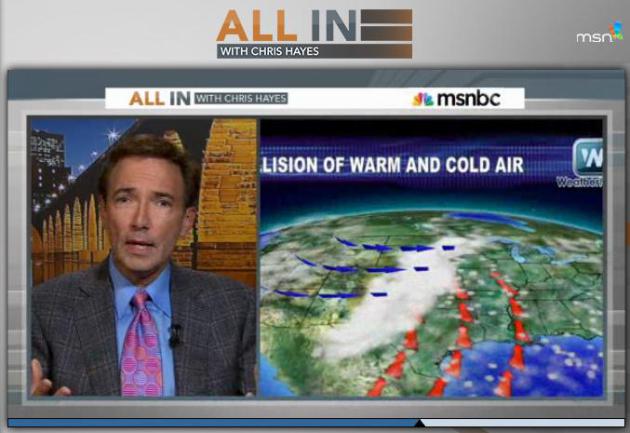
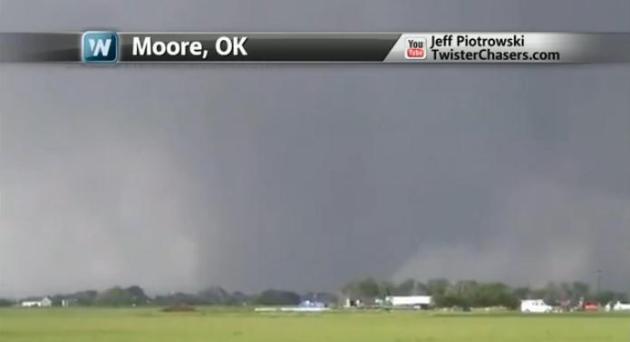


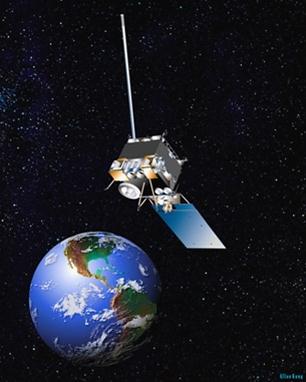








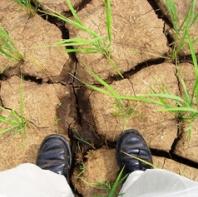

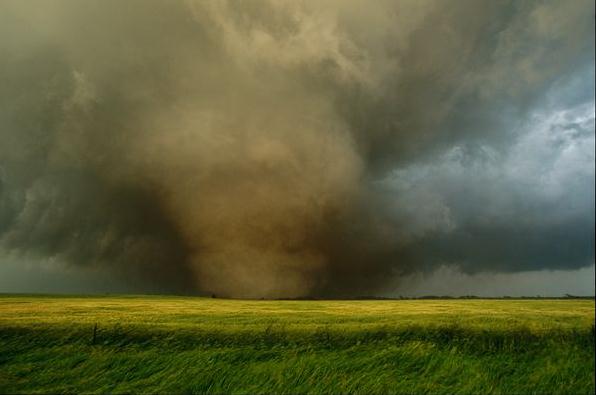
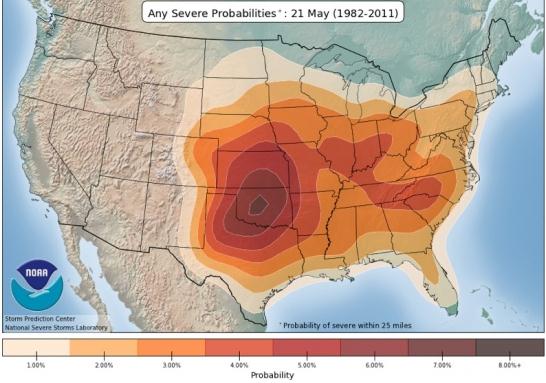


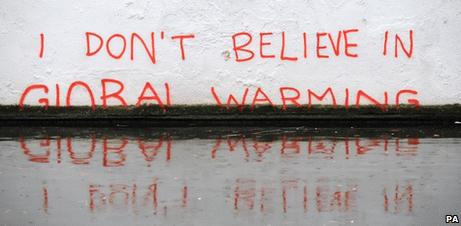
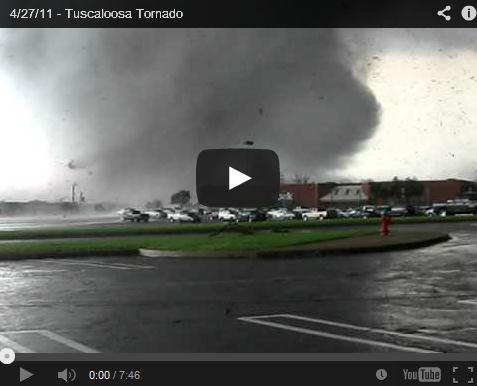
No comments:
Post a Comment